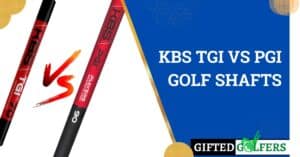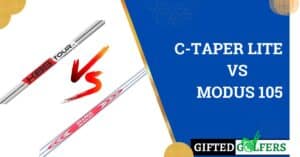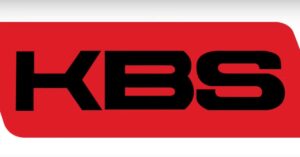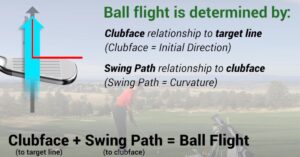KBS c taper vs $ taper: Which Golf Shaft Should You Choose?
Golfers constantly search for the newest and best equipment to improve their game. The golf club shaft significantly influences the accuracy and distance of each shot, making it one of the most essential pieces of equipment.
The well-known brand KBS in the golf industry offers two well-liked options for players, the KBS C Taper and KBS $ Taper.
Although both shafts offer unique benefits and traits, many golfers are unsure which suits them. This essay will contrast and compare the KBS C Taper and KBS $ Taper to help you make informed decisions and raise your game.
Quick Overview of KBS C Taper Shaft
The KBS C Taper shaft blends feel, control, and performance to become a widely sought-after substitute in the golf industry.
The club has stable weight distribution and characteristic tapering design thanks to its high-strength steel construction. As a result, accuracy, distance, and feel are all improved.
The KBS C Taper shaft may be used by golfers of all ability levels, from amateurs to experts. The mid-to low-kick point of the shaft allows for a smooth and steady release of the clubhead, which produces a predictable trajectory and ball flight.
The KBS C Taper is regarded for having a smooth feel that reduces vibration and improves playing quality.
Its medium-weight shaft makes it ideal for players who want a balanced club without sacrificing performance.
All things considered, the KBS C Taper is a versatile option that might help golfers of all ability levels improve their abilities and accomplish their course goals.
Quick Overview of KBS $ Taper Shaft
Another well-liked alternative for golfers looking to elevate their game on the course is the KBS $ Taper shaft.
The KBS $ Taper, in contrast to the KBS C Taper, is created especially for players who place a premium on control and precision.
With their robust build and high kick point, golfers can produce the quickest clubhead speed and the most vital ball flight. The result of this is shots that are longer, straighter, and more accurate.
The KBS $ Taper shaft’s reduced weight, more responsive feel, and quicker clubhead are further advantages.
For golfers who wish to extend their distance and have a quicker swing speed, this makes it the ideal choice.
The shaft’s lightweight design makes it an enjoyable option for lengthy play since it.
KBS C Taper vs KBS $ Taper Shaft: Quick Comparison Table
Below is a short comparison table of the KBS $ Taper vs. KBS C Taper shaft features. The general parameters of the KBS C Taper and KBS $ Taper shafts are compared in this table.
A golfer’s particular swing characteristics and playing style will determine whether the shaft suits them.
| Feature | KBS C Taper | KBS $ Taper |
| Design | Tapered | Stiffer |
| Kick Point | Mid to Low | High |
| Weight | Medium | Light |
| Performance | Improved accuracy and feel | Improved control and accuracy |
| Suitable for | Golfers of all skill levels | Golfers with fast swing speed |
| Feel | Soft | Responsive |
| Ball Flight | Consistent | Long and straight |
What are the Differences Between KBS C Taper and KBS $ Taper Shaft?
The KBS C Taper and KBS $ Taper shafts are both popular options in the golf industry, and each has unique characteristics that set it apart from competitors.
Design
The KBS C Taper shaft’s tapered design provides uniform weight distribution and stability over the whole club. On the other hand, the KBS $ Taper features a stiffer build and is mainly designed for control and accuracy.
Start Point
A controlled and steady release of the club head is made possible by the mid to low kick point of the KBS C Taper. The KBS $ Taper, on the other hand, has a high kick point that lets players generate the most amount of clubhead speed.
Weight
Because of its medium weight, the KBS C Taper is ideal for golfers who want a balanced club without sacrificing performance. The KBS $ Taper, on the other hand, is a lot lighter, providing a responsive feel and allowing for a higher clubhead speed.
Performance
The KBS C Taper is renowned for its improved accuracy and feel, while the KBS $ Taper is designed for players who want to improve their control, accuracy, and clubhead speed.
suitable for
The KBS $ Taper is best for players with quick swing speeds, while golfers of all ability levels can use the KBS C Taper.
Feel
While the KBS C Taper has a soft feel that reduces vibration and provides a comfortable playing experience, the KBS $ Taper has a responsive feel that is ideal for golfers looking to enhance control and accuracy.
Ball flight
The KBS $ Taper should be used by golfers who desire longer, straighter swings, whilst the KBS C Taper should be used by those who like a steady ball flight.
So, Which One Should You Choose: KBS C Taper or KBS $ Taper?
As we can see, there are very slight variations between them. Despite the fact that both are superb, golfers have other choices. Based on the following considerations, you can choose one of them.
Swing Speed
Players with quick swings have to use the KBS $ Taper. A better option for you would be the KBS C Taper if your swing speed is slower.
Playing Method
The KBS $ Taper might be your best bet if you want to improve your accuracy and control. On the other hand, if you’re looking for a shaft that will provide a consistent ball flight and a comfortable playing experience, the KBS C Taper might be a superior option.
Personal Preference
The choice between the KBS C Taper and KBS $ Taper will ultimately depend on your preferences and playing style. Try both options, if you can, and choose the one that best suits your style and produces the best results for your game.
FAQs
The answers to the following frequently asked questions should help you with any additional queries you might have regarding these two shafts.
What kind of material is used to create the KBS C Taper and KBS $ Taper shafts?
The KBS C Taper and KBS $ Taper shafts are made of high-quality steel, which gives them strength and durability while allowing them to perform at their peak on the course.
How does ball flight change according to the stiffness of the KBS $ Taper?
The KBS $ Taper shaft’s stiffness affects ball flight and improves control and accuracy. Because of the high kick point and low shaft weight, longer, straighter strokes may result in improved clubhead speed.
Can you use a different clubhead with the KBS C Taper and KBS $ Taper?
Yes, you can utilize a variety of clubheads, including drivers and irons, with the KBS C Taper and KBS $ Taper shafts. It’s important to consider the clubhead design and the golfer’s playing style when selecting a shaft.
Do the flex options for the KBS C Taper and KBS $ Taper differ from one another?
Indeed, there are differences between the flex options available for the KBS C Taper and KBS $ Taper. On the KBS C Taper, stiff and extra stiff is the only flex option; senior, regular, stiff, and highly stiff are all available for the KBS $ Taper.
How does performance for the KBS C Taper and KBS $ Taper change depending on shaft length?
The length of the shaft can affect how well the KBS C Taper and KBS $ Taper work by altering the weight distribution and balance of the club.
Golfers must choose the correct length for their particular requirements and playing style.
Are the KBS C Taper and KBS $ Taper durable and hold up over time?
Indeed, the KBS C Taper and KBS $ Taper are durable and sturdy due to their excellent steel construction.
How much do the KBS C Taper and KBS $ Taper cost in comparison?
The cost distinction between the KBS C Taper and KBS $ Taper varies depending on the retailer and the specific model. Given its sophisticated technology and design, the KBS $ Taper might be more expensive.
Do the KBS C Taper and KBS $ Taper require any additional installation or maintenance?
No additional installation or maintenance is required for the KBS C Taper or KBS $ Taper. But, it’s always a good idea to follow the manufacturer’s care and maintenance recommendations.
Can you use the KBS C Taper and KBS $ Taper on both driver and iron clubs?
Yes, you can use your driver and iron clubs with the KBS C Taper and KBS $ Taper. Therefore, golfers should consider the specific requirements and playing preferences for each type of club when selecting a shaft.






